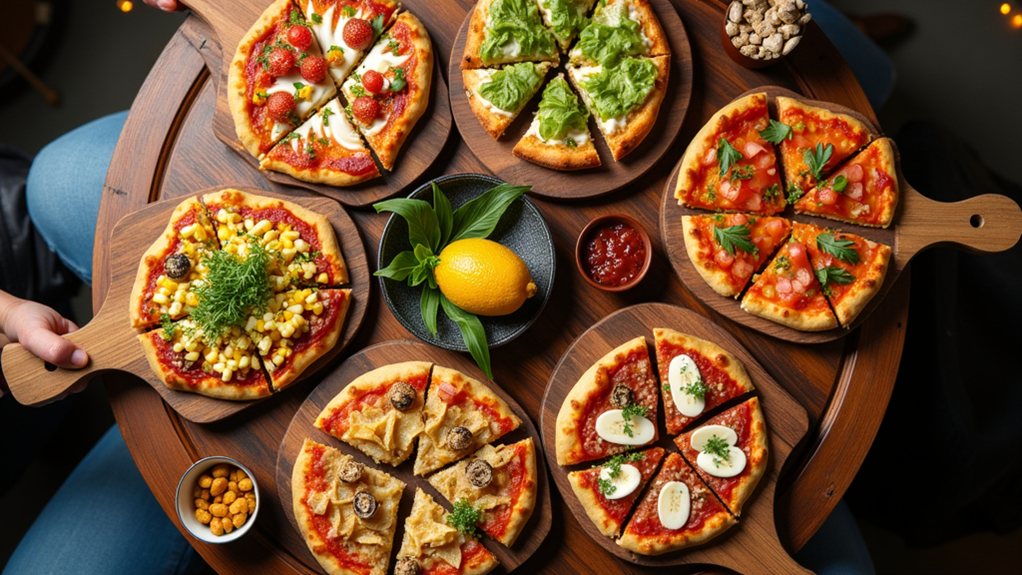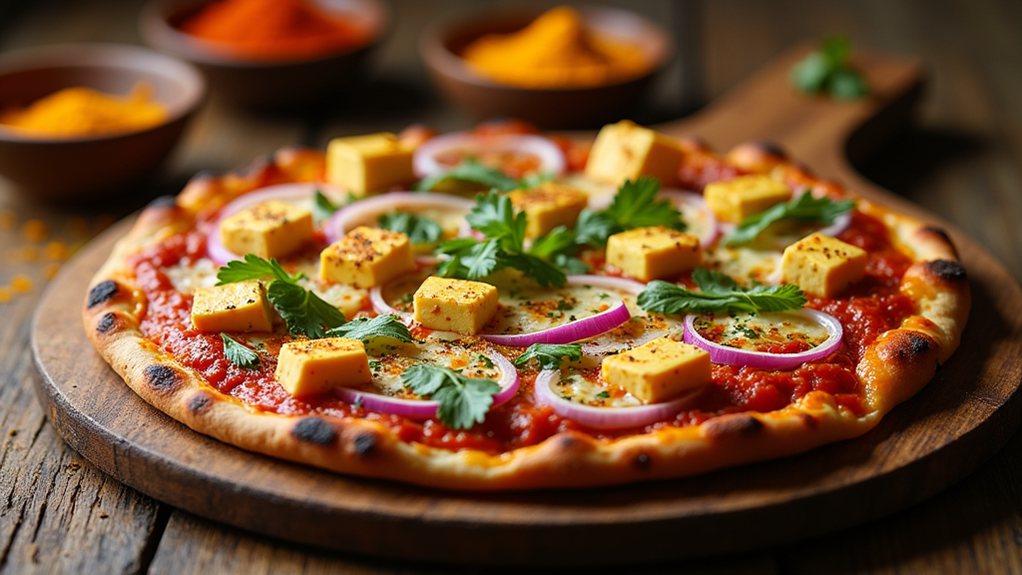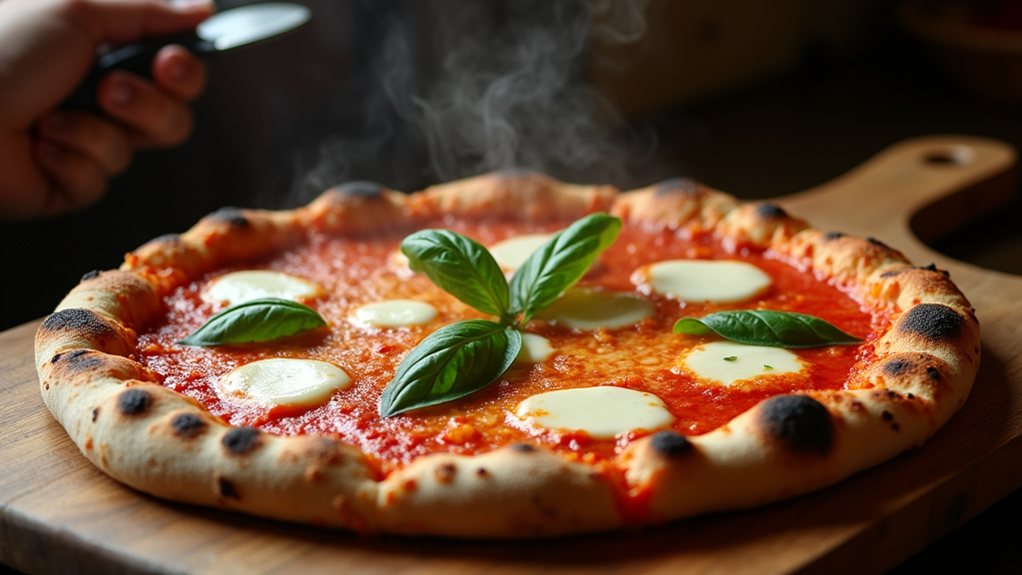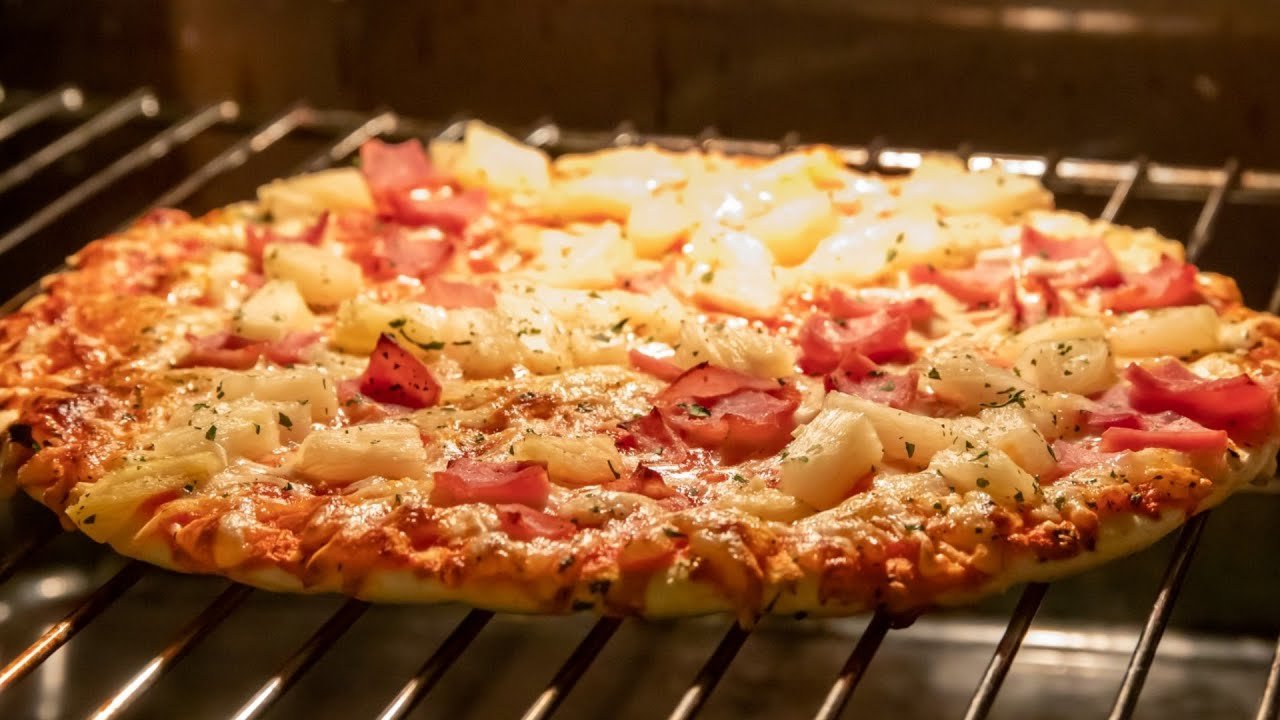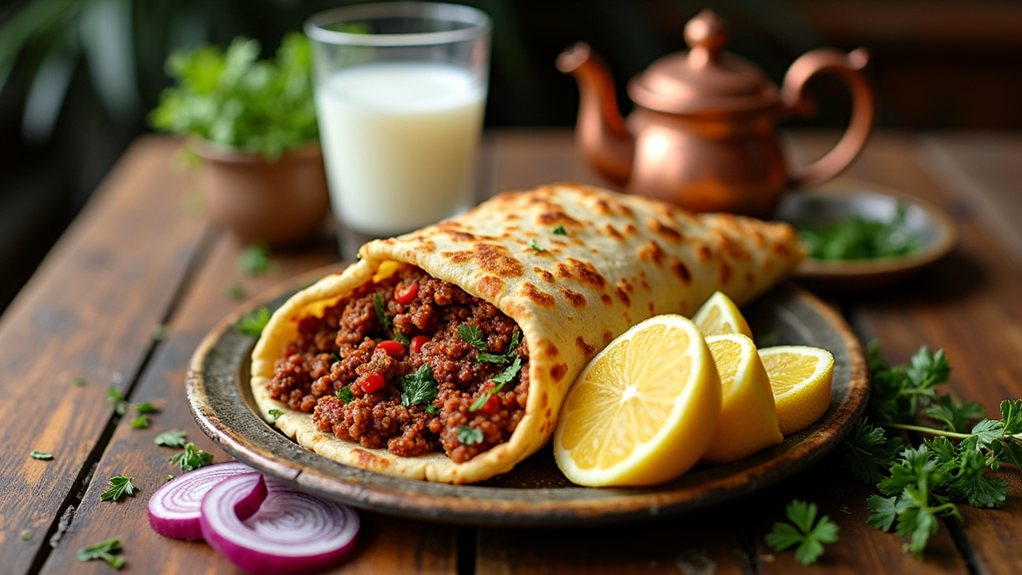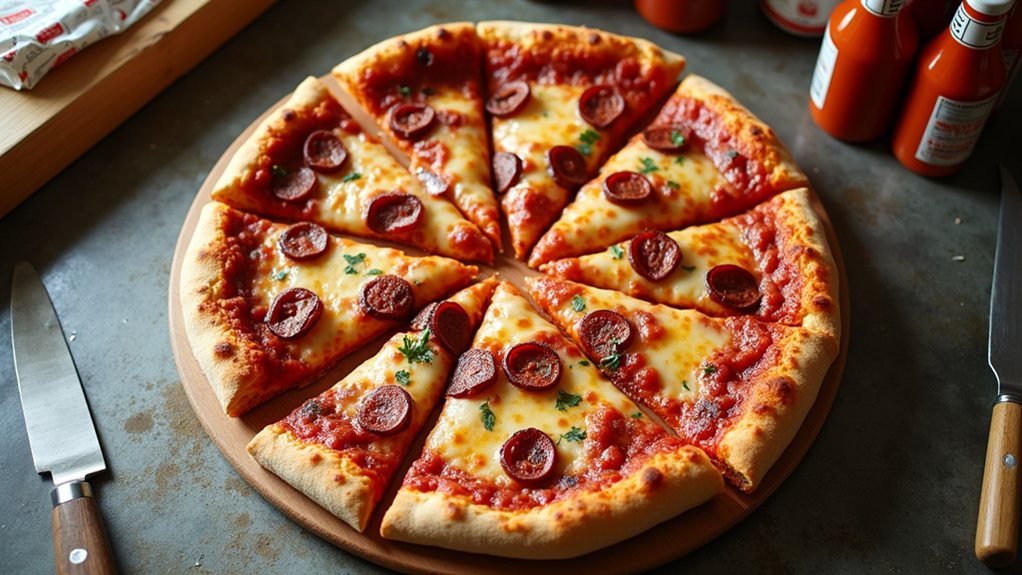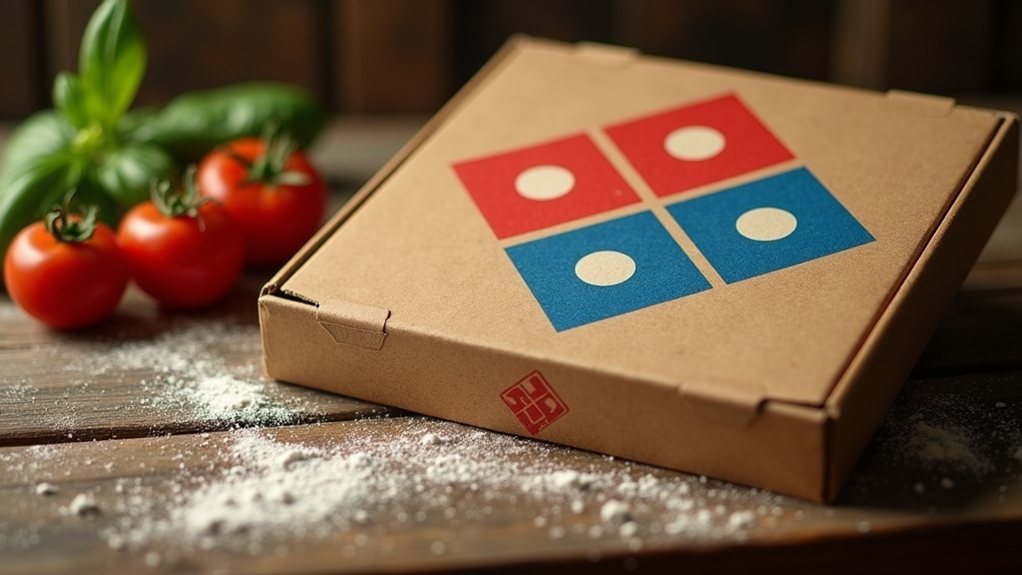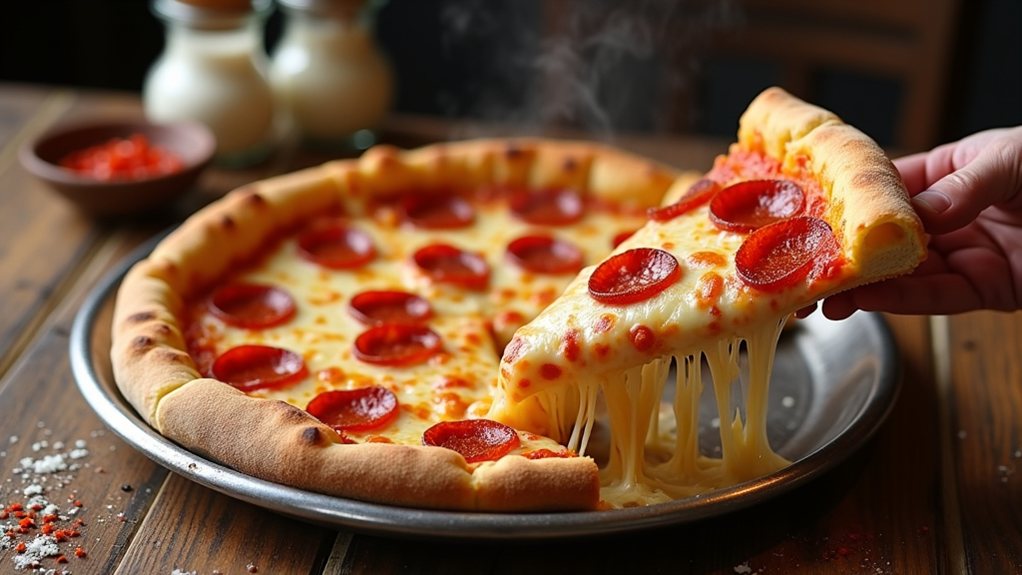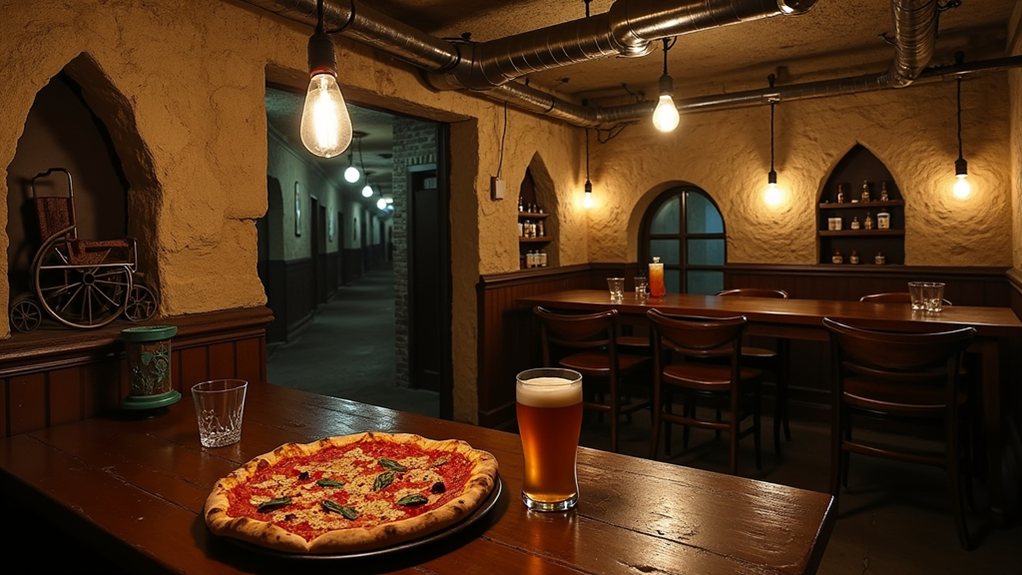Brazilian pizza stands as a culinary tribute to the country's talent for reinvention. While maintaining its Italian foundations, Brazil transforms this beloved dish with an array of unconventional toppings that might surprise purists. Hearts of palm, catupiry cheese, and even french fries find their way onto savory crusts, while sweet versions feature tropical fruits paired with unexpected companions. This gastronomic creativity reflects Brazil's multicultural identity, where tradition meets innovation in every slice.
The Italian Heritage Behind Brazilian Pizza Culture
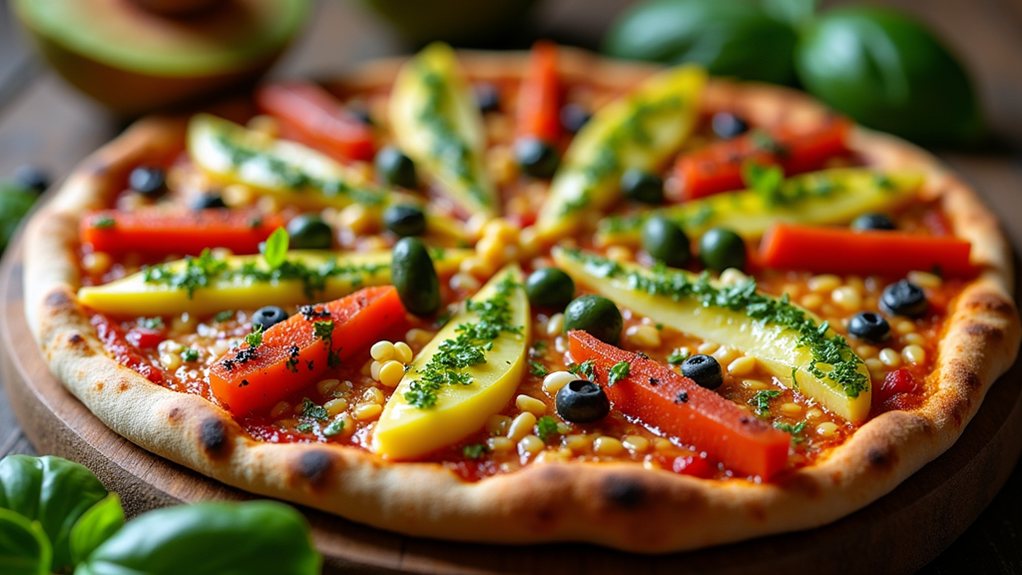
While many people associate pizza solely with Italy, the story of Brazilian pizza begins with a significant wave of Italian immigration between 1880 and 1930. These newcomers, settling mainly in São Paulo, brought with them culinary traditions that would transform Brazilian food culture forever.
Today, nearly 15% of Brazil's population claims Italian heritage, creating a solid foundation for authentic pizza-making techniques to flourish and evolve. The Embassy of Italy in Brazil reported approximately 32 million descendants of Italian immigrants in the country as of 2013.
São Paulo, with its strong Italian influence, has become the epicenter of Brazilian pizza innovation, where traditional methods meet local creativity. Similar to how New York-style pizza evolved from Italian roots to create its own distinct identity, Brazilian pizza developed unique characteristics that set it apart from its origins. The cultural exchange resulted in a unique pizza style that maintains Italian craftsmanship while embracing Brazilian flavors and ingredients.
This fusion reflects a broader pattern of cultural adaptation, where Italian immigrants preserved their identity through food while simultaneously developing new traditions that resonated with their adopted homeland.
Exploring Brazil's Beloved Pizza Toppings: From Catupiry to Calabresa

Brazilian pizza toppings represent an enchanting fusion of traditional Italian techniques and distinctly South American flavors, creating a pizza culture unlike any other in the world.
While Catupiry cheese and Calabresa sausage reign supreme among local favorites, the Brazilian pizza landscape extends far beyond these staples to include hearts of palm, corn, and even french fries. The creamy, tangy Catupiry often pairs with shredded chicken in the beloved Frango com Catupiry combination. Brazilians typically enjoy their pizza with a thin and crunchy crust that features minimal tomato sauce and generous amounts of cheese. Unlike traditional veggie pizzas, Brazilian vegetable-topped options often incorporate nutritional benefits while maintaining the distinctive Brazilian flavor profile.
Brazilian pizzas transcend basic toppings, venturing into unexpected territory with hearts of palm, corn, and french fries alongside beloved Frango com Catupiry combinations.
- Most Brazilian pizzas feature oregano by default, reflecting the deep Italian influence that still permeates their pizza culture.
- Regional variations showcase distinct preferences, with southern states favoring frozen pizzas.
- The all-you-can-eat pizza culture encourages exploration of the typically 15+ topping combinations available at pizzerias.
Sweet Sensations: The Unique World of Brazilian Dessert Pizzas
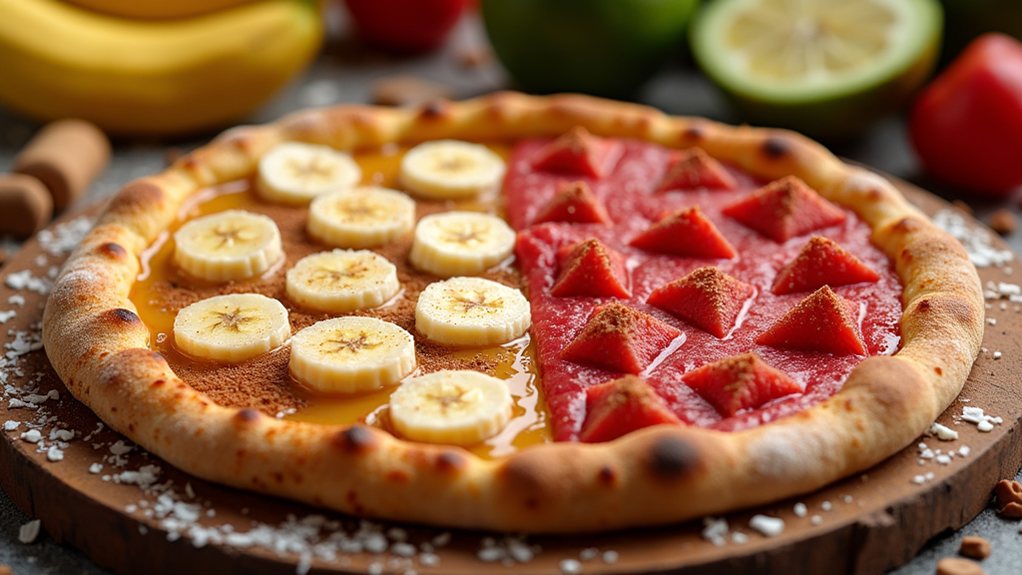
Sweet pizza might sound peculiar to Western palates, but in Brazil, dessert pizzas represent a beloved culinary tradition that showcases the country's innovative approach to this Italian import.
These confections feature distinctive Brazilian combinations like the classic Romeu e Julieta, which pairs guava paste with Catupiry cheese, or Banana com Canela pizzas topped with banana slices, condensed milk, and warming cinnamon.
The preparation involves techniques adapted from traditional pizza-making, with special attention to layering ingredients for balanced flavors. Chefs typically arrange guava paste circles around the pizza to mimic the appearance of pepperoni, creating a playful visual presentation.
Italian immigrants brought pizza to Brazil, but locals transformed it by incorporating regional ingredients and dessert sensibilities.
Chocolate-based pizzas often feature coconut flakes or strawberries, while condensed milk serves as a creamy base for diverse sweet creations, reflecting Brazil's rich dessert culture and willingness to experiment with unexpected flavor combinations. Unlike traditional pizzas, these sweet versions can be enjoyed without the guilt of excess calories when made with low-fat cheese alternatives.
Dining Etiquette: How Brazilians Enjoy Their Pizza
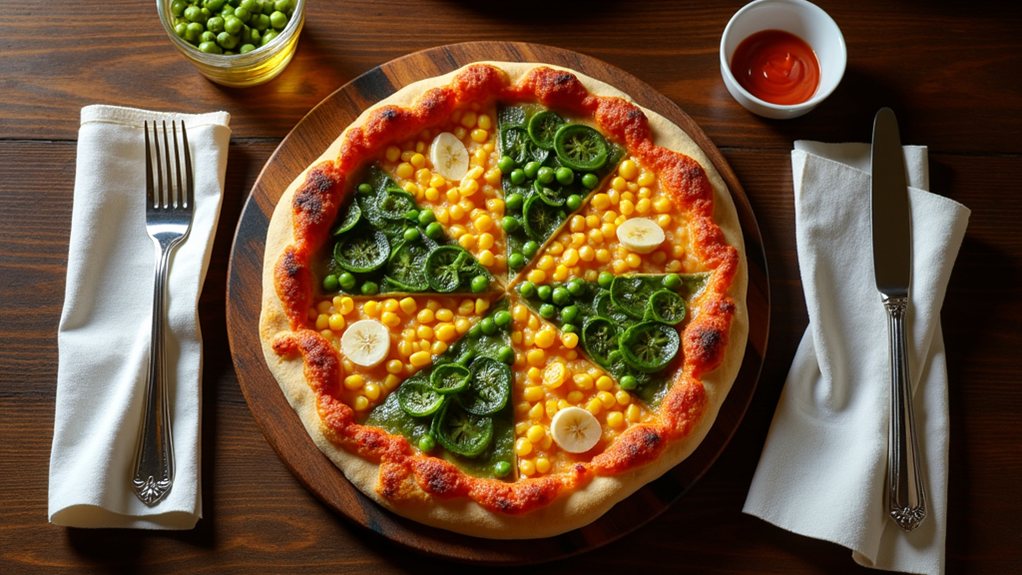
Moving from the sweet side of Brazilian pizza culture, the distinct etiquette surrounding pizza consumption reveals another fascinating dimension of this culinary tradition.
Unlike many Western customs, Brazilians typically enjoy their pizza with knife and fork, regardless of the setting. This approach reflects broader Brazilian dining values, where meals are treated as social occasions deserving proper attention.
When enjoying pizza Brazilian-style, remember these key practices:
- Keep both hands visible on the table, not in your lap
- Pass dishes to the left, maintaining the flow of shared food
- Put away your phone to honor the social nature of the meal
The dining experience extends beyond the pizza itself, incorporating cultural nuances that transform a simple meal into a meaningful social ritual, complete with animated conversation and unhurried enjoyment.
Regional Pizza Specialties Across Brazil

While Italy may have introduced pizza to the world, Brazil has transformed this culinary staple into a canvas for regional expression across its vast territory. Each region proudly offers unique combinations that reflect local ingredients and cultural influences.
| Region | Signature Pizza | Key Ingredients |
|---|---|---|
| São Paulo | Portuguesa | Ham, eggs, onions, olives |
| Rio de Janeiro | Frango com Catupiry | Shredded chicken, creamy Catupiry cheese |
| Northeast | Camarão | Grilled shrimp, mozzarella |
| South | Strogonoff | Beef strips in creamy sauce |
| Minas Gerais | Romeu e Julieta | Guava paste with mozzarella |
São Paulo deserves special mention as Brazil's unofficial pizza capital, where the Italian immigrant influence remains strongest. Meanwhile, coastal regions favor seafood toppings, and in many places, the hearts of palm pizza (palmito) represents a truly Brazilian innovation.
The Rodízio Experience: All-You-Can-Eat Pizza Brazilian Style

When Brazilians talk about "rodízio" pizza, they're referring to a distinctly festive dining experience that transforms the simple act of eating pizza into an interactive, communal celebration.
For a fixed price, servers continuously bring slices directly to tables, offering an array of over 50 different flavors that range from savory combinations to sweet dessert options.
What makes the rodízio experience special:
- Unlike American buffets, customers never leave their seats as servers circulate with fresh slices throughout the meal.
- The leisurely pace encourages diners to savor each unique flavor, from traditional Italian to distinctly Brazilian combinations.
- Complementary side dishes like salads, pasta, and fried polenta round out the meal, creating a complete Brazilian-Italian fusion experience.
FAQs
Is Brazilian Pizza Gluten-Free?
Brazilian pizza is not inherently gluten-free, but can be made with tapioca starch and other gluten-free flours, adapting the traditional wheat crust while maintaining its distinctive topping variety.
How Much Does a Typical Brazilian Pizza Cost?
Brazilian pizza typically costs between R$30 and R$80, varying by location, size, and quality. All-you-can-eat "rodízios" include multiple toppings, appetizers, and dessert pizzas for a fixed price.
Are There Vegan Options for Brazilian Pizza?
Vegan options for Brazilian pizza exist with plant-based alternatives. Chefs substitute dairy cheese with vegan mozzarella and meats with tofu or seitan. Traditional vegetable toppings like hearts of palm remain naturally compliant.
What Drinks Pair Well With Brazilian Pizza?
Brazilian pizza pairs wonderfully with cachaça cocktails, guarana soda, tropical fruit juices, or local beers. Wine enthusiasts might enjoy Tempranillo with meat toppings or crisp Pinot Grigio with lighter options.
Do Brazilians Order Pizza for Delivery or Takeout?
Brazilians mainly prefer delivery over takeout when ordering pizza, with platforms like iFood handling 87% of online food orders across 1,700+ cities, driven by convenience and traffic avoidance considerations.
